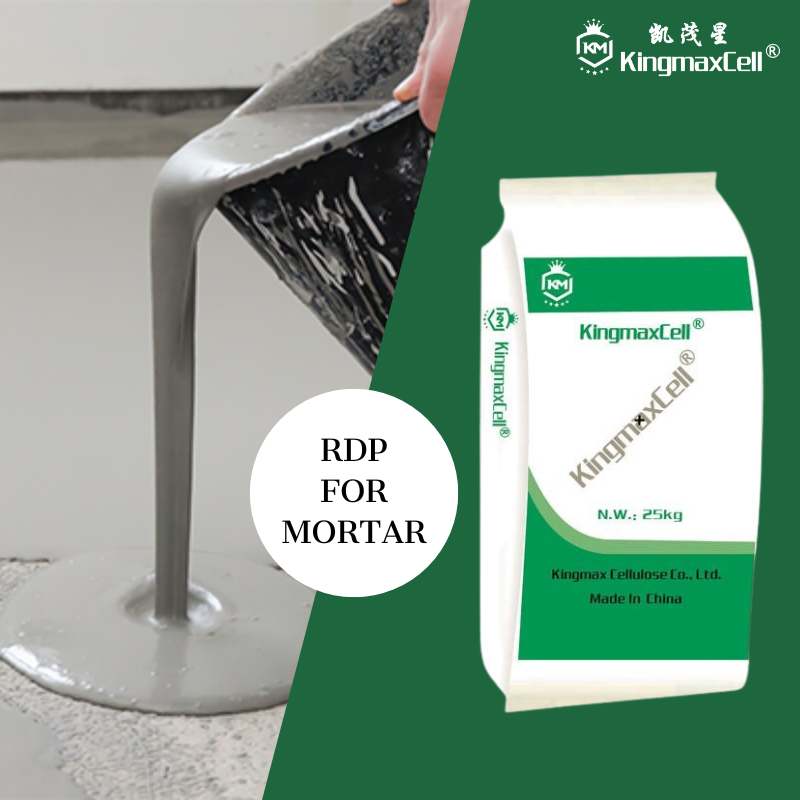-

From Mortar to Plaster: Applications of Kingmax RDP in Construction
Modern construction demands materials that are durable, flexible, and easy to work with. Cement-based products such as mortars, plasters, and tile adhesives must meet strict performance standards while withstanding environmental stresses. Kingmax Redispersible Polymer Powder (RDP) is a versatile ...Read more -

Boost Crack Resistance with Kingmax Redispersible Polymer Powder
Cracking is one of the most common and costly problems in cement-based construction materials. Whether in mortars, tile adhesives, skim coats, or repair compounds, cracks not only reduce durability but also compromise aesthetics and long-term performance. The solution lies in Redispersible Polyme...Read more -

Kingmax RDP in Skim Coat: Smooth Surfaces with Lasting Strength
In finishing works, skim coat plays a critical role in delivering smooth, level, and durable wall surfaces. However, traditional skim coat formulations often face challenges such as poor adhesion, cracking, and limited durability. By incorporating Redispersible Polymer Powder (RDP), Kingmax helps...Read more -

Kingmax RDP vs Traditional Additives: What Makes the Difference?
In the construction industry, additives play a crucial role in enhancing the performance of cement-based materials. While traditional additives such as simple plasticizers or conventional polymers provide basic benefits, Redispersible Polymer Powder (RDP)—especially Kingmax RDP—offers superior pe...Read more -

From Mortar to Plaster: Applications of Kingmax RDP in Construction
In today’s construction industry, Redispersible Polymer Powder (RDP) has become an indispensable additive for improving the performance of cement-based materials. By enhancing adhesion, flexibility, and durability, RDP allows builders and manufacturers to deliver superior products across a wide r...Read more -

Why Leading Manufacturers Trust Kingmax RDP for Consistent Quality
In the competitive world of construction materials, consistency and reliability are the cornerstones of success. For leading manufacturers producing tile adhesives, mortars, skim coats, or insulation systems, the choice of raw materials directly impacts both product performance and customer satis...Read more -

Eco-Friendly Building Solutions with Kingmax RDP
The construction industry is undergoing a major transformation, with sustainability becoming a top priority worldwide. As builders, manufacturers, and distributors look for ways to reduce environmental impact without compromising quality, Redispersible Polymer Powder (RDP) emerges as a key soluti...Read more -

The Role of RDP in Reducing Shrinkage and Increasing Durability
In cement-based construction materials, two common challenges often compromise performance: shrinkage and limited durability. Shrinkage can lead to cracking, poor bonding, and surface imperfections, while insufficient durability results in frequent repairs and reduced structural reliability. The ...Read more -

Strength in Every Particle: Kingmax’s High-Quality RDP Production
1. Premium Raw Materials for Superior RDP Kingmax starts with carefully selected base polymers and additives to ensure: High polymer purity for stable performance. Low ash content for better strength and durability. Eco-friendly ingredients that meet international environmental standards. ...Read more -

Excellence in Every Grain: Kingmax’s High-Quality HPMC/MHEC Production
In the construction industry, consistency and precision are key to achieving durable, high-performing materials. Every particle of HPMC (Hydroxypropyl Methylcellulose) and MHEC (Methyl Hydroxyethyl Cellulose) plays a role in determining adhesion, workability, and durability. At Kingmax, we focus ...Read more -

Trusted Globally for Quality: The Story of Kingmax Cellulose
In the construction industry, reliability and consistent performance are the foundation of every successful project. Builders, manufacturers, and distributors around the world turn to Kingmax cellulose ethers—including HPMC, MHEC, and RDP—because of our commitment to quality, innovation, and glob...Read more -

From Raw Materials to Final Product: How Kingmax Ensures Superior Quality
In modern construction, quality and consistency are not optional—they are the foundation of trust between manufacturers, distributors, and builders. At Kingmax, we understand that every tile adhesive, mortar, plaster, or coating relies on dependable additives like HPMC (Hydroxypropyl Methylcellul...Read more

